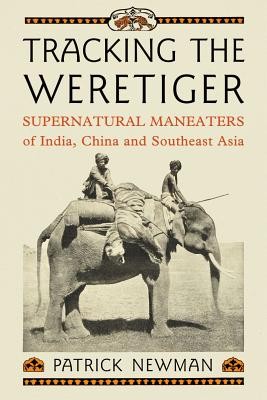
- We will send in 10–14 business days.
- Author: Patrick Newman
- Publisher: McFarland & Company
- ISBN-10: 0786472189
- ISBN-13: 9780786472185
- Format: 15 x 22.9 x 1.3 cm, softcover
- Language: English
- SAVE -10% with code: EXTRA
Reviews
Description
Drawing on dramatic accounts by European colonials, and on detailed studies by folklorists and anthropologists, this work explores intriguing age-old Asian beliefs and claims that man-eating tigers and "little tigers," or leopards alike, were in various ways supernatural. It is a serious work based on extensive research, written in a lively style. Fundamental to the book is the evocation of a long-vanished world. When a man-eater struck in colonial times, people typically said it was a demon sent by a deity, or even the deity itself in animal form, punishing transgressors and being guided by its victims' angry spirits. Colonials typically dismissed this as superstitious nonsense but given traditional ideas about the close links between people, tigers and the spirit world, it is quite understandable. Other man-eaters were said to be shapeshifting black magicians. The result is a rich fund of tales from India and the Malay world in particular, and while some people undoubtedly believed them, others took advantage of man-eaters to persecute minorities as the supposed true culprits. The book explores the prejudices behind these witch-hunts, and also considers Asian weretiger and wereleopard lore in a wider context, finding common features with the more familiar werewolves of medieval Europe in particular.
EXTRA 10 % discount with code: EXTRA
The promotion ends in 19d.18:07:10
The discount code is valid when purchasing from 10 €. Discounts do not stack.
- Author: Patrick Newman
- Publisher: McFarland & Company
- ISBN-10: 0786472189
- ISBN-13: 9780786472185
- Format: 15 x 22.9 x 1.3 cm, softcover
- Language: English English
Drawing on dramatic accounts by European colonials, and on detailed studies by folklorists and anthropologists, this work explores intriguing age-old Asian beliefs and claims that man-eating tigers and "little tigers," or leopards alike, were in various ways supernatural. It is a serious work based on extensive research, written in a lively style. Fundamental to the book is the evocation of a long-vanished world. When a man-eater struck in colonial times, people typically said it was a demon sent by a deity, or even the deity itself in animal form, punishing transgressors and being guided by its victims' angry spirits. Colonials typically dismissed this as superstitious nonsense but given traditional ideas about the close links between people, tigers and the spirit world, it is quite understandable. Other man-eaters were said to be shapeshifting black magicians. The result is a rich fund of tales from India and the Malay world in particular, and while some people undoubtedly believed them, others took advantage of man-eaters to persecute minorities as the supposed true culprits. The book explores the prejudices behind these witch-hunts, and also considers Asian weretiger and wereleopard lore in a wider context, finding common features with the more familiar werewolves of medieval Europe in particular.


Reviews